by Anne Kupke
This article was published in German on the website of the Verein für erlebte Geschichte in Halle an der Saale. On 12 November 2024, Stolpersteine were laid at Mozartstrasse 24 to honour the family of Dr. Paul Marcus, Hertha Marcus, née Loeb, and their daughter Marion Beate Marcus, who lived there until 1938.

See as well:
The Family of Emma (née Gassenheimer) and Simon Marcus
The Family of Samuel (1837-1892) and Lotte (née Stein) Gassenheimer
Descendants List of Samuel (1837-1892) and Lotte (née Stein) Gassenheimer
Kirchnerstrasse 17 — The Family of Siegfried and Emma (née Becker) Marcus
Paul Marcus was the eldest son of Emma Marcus née Gassenheimer (b. 16. April 1863) and Simon Marcus (b. 14. June 1861). The Gassenheimers were a large family from Themar in Thuringia who specialized in the manufacture and extensive trade in agricultural machinery. Simon Marcus was a merchant and joined the Gassenheimers’ business. When they married in 1888, Emma moved to the hometown of Simon Marcus in Dessau, where all three sons were born, Paul (b. 6. February 1891), Siegfried (b. 3. June 1893) and Erich (b. 4. March 1896).
 Paul Marcus graduated from the Herzogliches Friedrichs-Gymnasium in Dessau in 1912 and went on to study medicine in Freiburg. From there, he moved to Munich, where he became a member of a Jewish student fraternity like his brother Siegfried, who was also studying in Munich. Then, in 1914, the First World War broke out. All three Marcus brothers volunteered for the army. Paul Marcus was deployed as a field doctor in accordance with the training he had begun.
Paul Marcus graduated from the Herzogliches Friedrichs-Gymnasium in Dessau in 1912 and went on to study medicine in Freiburg. From there, he moved to Munich, where he became a member of a Jewish student fraternity like his brother Siegfried, who was also studying in Munich. Then, in 1914, the First World War broke out. All three Marcus brothers volunteered for the army. Paul Marcus was deployed as a field doctor in accordance with the training he had begun.
The Marcus brothers returned from the war to Halle at the end of 1918, where their parents had moved from Dessau around 1915. Three of Emma Marcus’ siblings were already living in Halle at this time: Georg Gassenheimer with his wife Selma and daughter Ruth; Minna Frankenberg with her husband Nathan (->STOLPERSTEINE Feuerbachstraße 74); and Elise Ney (->STOLPERSTEINE Maybachstraße 2). Emma and Simon Marcus lived with their adult sons in a large apartment at Kirchnerstrasse 21 with eight rooms and a view of Halle’s train station.
Paul Marcus now finished his studies, worked for three years as an assistant doctor at the university hospitals in Halle and Erlangen and submitted his dissertation in 1922.
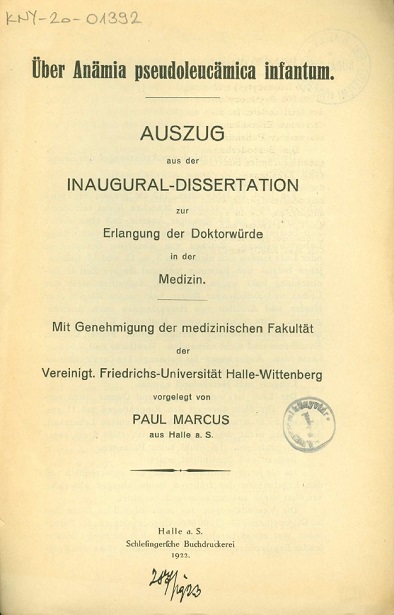
In 1923, he set up as a general practitioner and opened a practice at Grosse Ulrichstrasse 37; from 1930, the practice was located at no. 29.


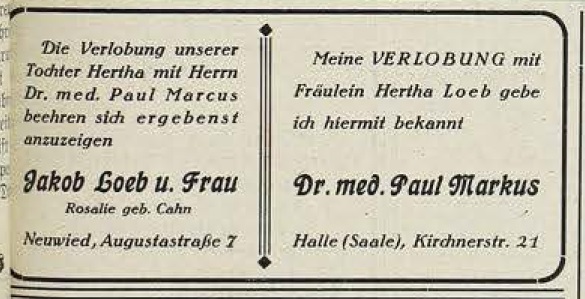
In 1927, he married Hertha Loeb (*13.1.1906) from Neuwied in the district of Koblenz. Her parents Jakob and Rosalie Loeb owned a brush factory there. Hertha had studied to be a teacher, but it is not yet known whether she also worked as a teacher.

After their wedding, Hertha and Paul Marcus set up their own household at Mozartstraße 24. Their daughter Marion Beate was born on November 3, 1930. Their second daughter, Renate Elisabeth, was born in May 1936. She died of sudden infant death syndrome at the age of one.
Marion started school in 1937. The girls at the Giebichenstein elementary school were taught separately from the boys at Große Brunnenstraße 4.
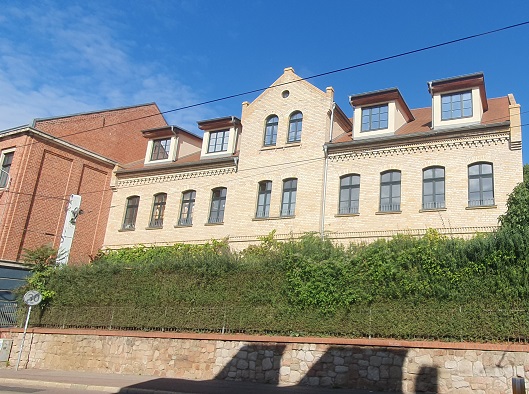
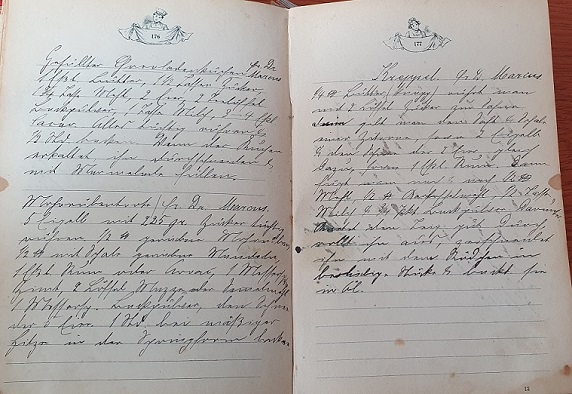
The Marcus family took part in the life of the Jewish community in Halle and advertised family events in the synagogue district newspaper. There were contacts with other Jewish families in Halle. Hertha Marcus’ recipes for filled chocolate cake, carrot cake and Kreppel marked “Frau Dr. Marcus” were included in Gertrud Katz’s cookbook (-> Stolperstein Hansering 2), which she took with her to England in 1939 and which returned to Halle in 2024. Paul Marcus was a member of the Association of National German Jews and, like his brothers, the Jewish Front Fighters’ Association, all of which were banned in 1938.


The professional situation was a cause for concern. At the beginning of 1933, there were between 8,000 and 9,000 Jewish doctors working in the German Reich, most of them practising as registered doctors. Their work was banned as early as April 1933. Exceptions were only made for doctors who had been deployed to the front, which applied to Paul Marcus. In July 1938, it was decided to revoke the licence to practise medicine of the approximately 3,000 Jewish doctors still working on 30 September 1938, which would also have meant the end of Paul Marcus’ professional activity. After this date, Jewish doctors could only work as “medical practitioners” with special authorisation and were then only allowed to treat Jewish patients.
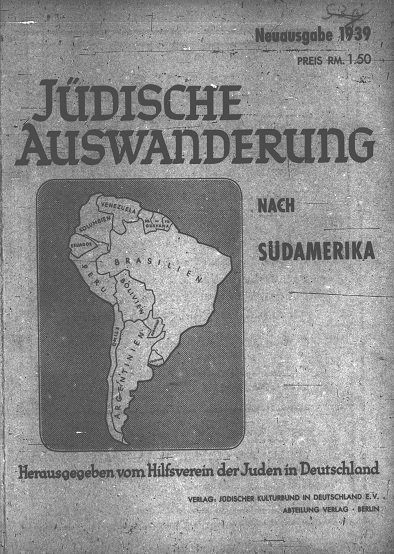
Paul and Hertha Marcus decided to emigrate to Uruguay and were granted the necessary permit. All sorts of things had to be prepared for their departure. A certificate of good conduct and a certificate of freedom from debt had to be obtained and the income tax return for the first half of 1938 had to be completed. Paul cancelled his practice and was removed from the register of doctors by the Association of Statutory Health Insurance Physicians.
Hertha tried unsuccessfully to persuade her six-year-older brother Max, who was a lawyer in Neuwied, and his wife Lilly to come with her. Her mother had already died in 1931 and her father shortly before in 1937, leaving her with only her brother. However, Max Loeb and his wife Lilly remained in Germany and were deported from Cologne to the Minsk ghetto in July 1942 and later murdered in the Maly Trostinec killing centre. Paul Marcus’ parents had also already passed away, his father Simon died in 1925 and his mother Emma in 1932. Both are buried in the Humboldtstraße cemetery. Paul’s brothers Siegfried and Erich managed to escape to the USA (-> STOLPERSTEINE Kirchnerstrasse 21). When the Marcus family left Halle in September 1938, Paul was 47 years old, Hertha 32 and daughter Marion 8.


Due to the Reich Flight Tax and other obligatory levies, all of which served to deprive Jewish citizens of large parts of their assets, there was not much left of the family’s savings on departure. Nevertheless, Paul Marcus managed to take some medical equipment from his practice with him on his journey, which made it easier for him to start a new career. Pieces of furniture, carpets, books and other memorabilia were packed for the journey and checked in as freight. The Bechstein grand piano, which Paul had bought from the Albert Hoffmann company in Halle in 1927 and given to Hertha as a wedding present, and the car, an Opel, also travelled across the Atlantic.
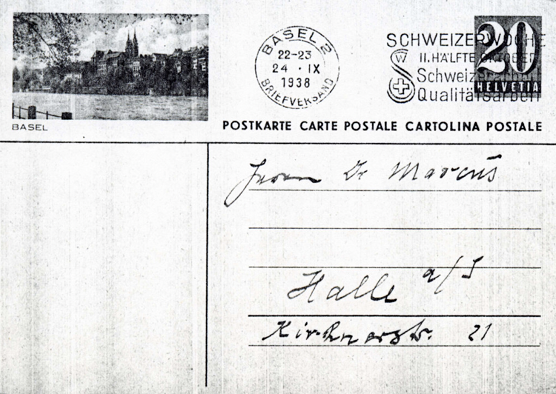
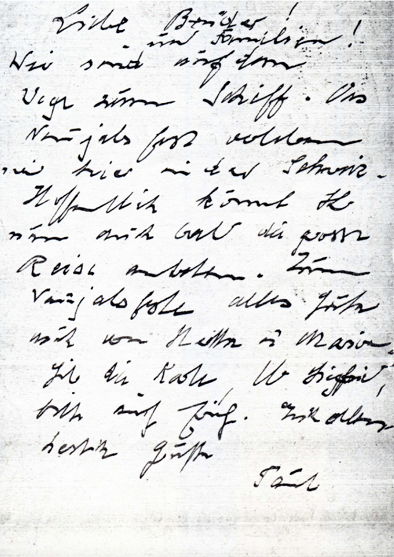
The family first went to Switzerland. At the end of September 1938, Paul Marcus wrote a postcard from Basel to his family in Halle with good wishes for the Jewish New Year. “Dear brothers and families! We are on our way to the ship. We are spending the New Year (meaning the Jewish New Year 12-14 September 1938) here in Switzerland. Hopefully you will soon be able to embark on your long journey. All the best for the New Year. Also from Hertha and Marion. Please give the card, dear Siegfried, to Erich too. Best wishes to you all Paul”
In October 1938, the Marcus family boarded the steamer “Aurigny” in Le Havre, France, bound for South America and reached the capital of Uruguay, Montevideo, at the beginning of November 1938. On board were numerous other Jews from several European countries. Most of them stayed on the ship, which travelled on to Buenos Aires, Argentina. Not all of the suitcases had arrived in Montevideo and customs had unexpectedly imposed such a high import fee on the Opel that it was equal to the new value and the Marcus family was unable to redeem the car.

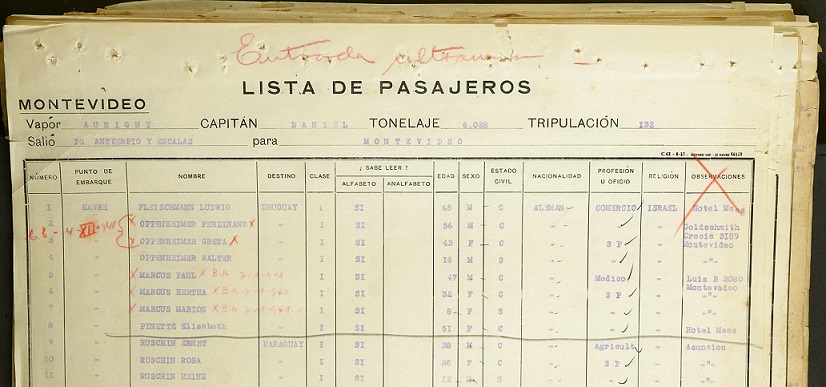
In Uruguay, the family put the traumatic events behind them and began a new life under difficult conditions. They changed their surname to Marcos, Paul became Pablo, Marion Beate became María Beatriz, and there was no Spanish equivalent for Hertha. The Marcus family assessed the social mood in their new country in such a way that they felt it was safer to discard their Jewish identity and convert to the Catholic faith of the local majority society.
Initially, Hertha Marcus supported the family on her own by working as a freelance translator for German, French and Spanish and also offering private German lessons. Enrolling Marion Beate at the German School Abroad in Montevideo did not seem like a good idea to her parents, as a significant proportion of the school community was in favour of the anti-Jewish policies in the German Reich. Instead, she attended a school that taught in French. She learnt Spanish in the afternoons.
As the authorities did not recognise his certificates, Paul Marcus had to take all his exams again in Uruguay and in Spanish in order to be able to work as a doctor. Once he had overcome this hurdle, he set up a room in his house as a practice. Paul Marcus died in 1961 and the family did not talk to their descendants about their past in Europe or their own Jewish origins.
The descendants only knew that the family had found refuge in Uruguay before the war. After her husband’s death, Hertha travelled to Europe every year and visited her birthplace Neuwied, where her parents are buried. After Hertha’s death in 1994, Marion Beate’s three children discovered documents written in Hebrew in their grandparents’ house and began researching their own family history. In 2009, one of her daughters managed to persuade Marion Beate to travel to Halle, her hometown, which she had left 70 years earlier. Marion Beate Marcus died in 2017.
Between 1933 and 1945, around 10,000 European Jews found refuge in Uruguay, a country with around 2 million inhabitants on the Rio de la Plata. Descendants of Hertha, Paul and Marion Beate Marcus still live there today.
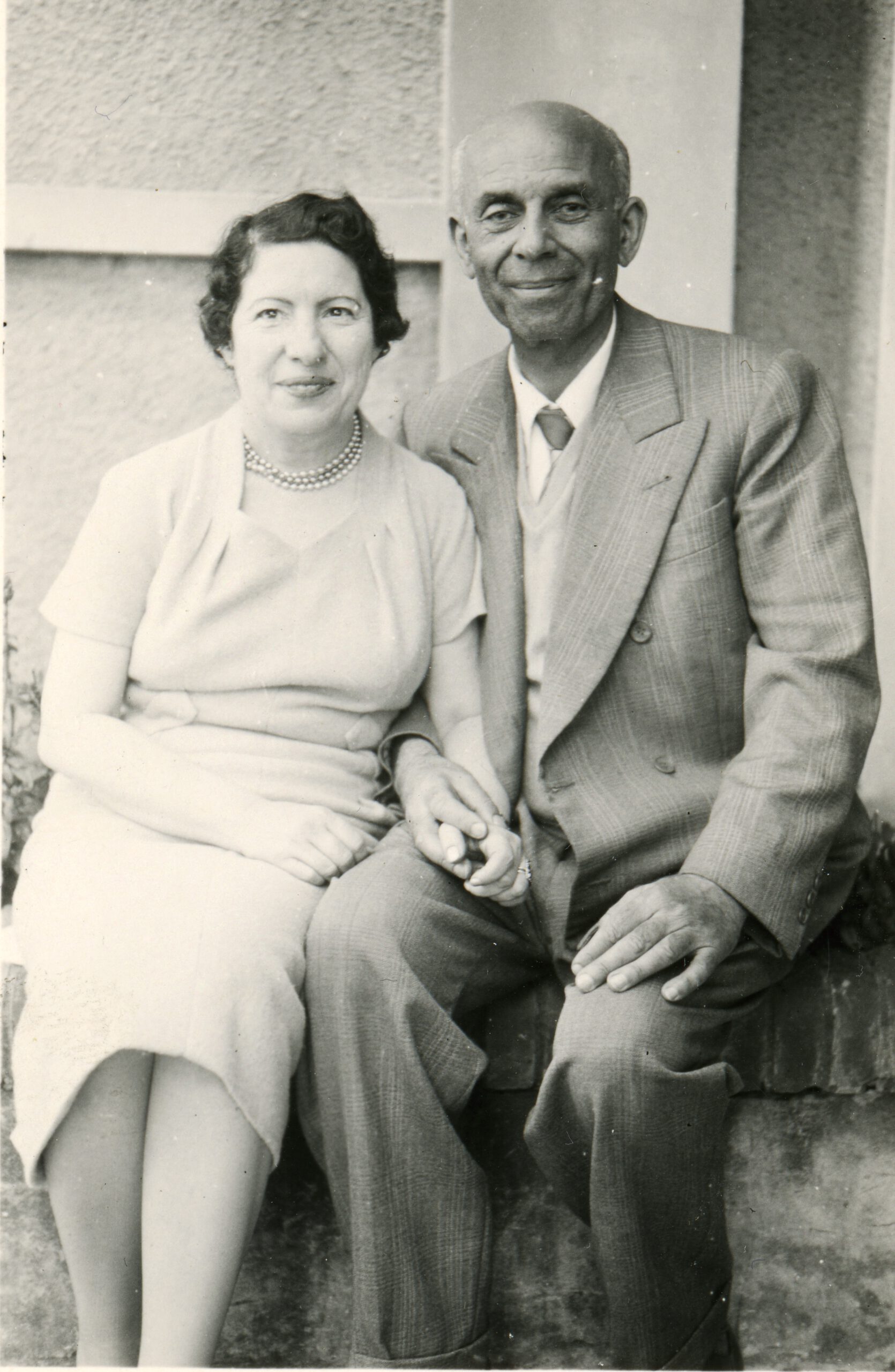
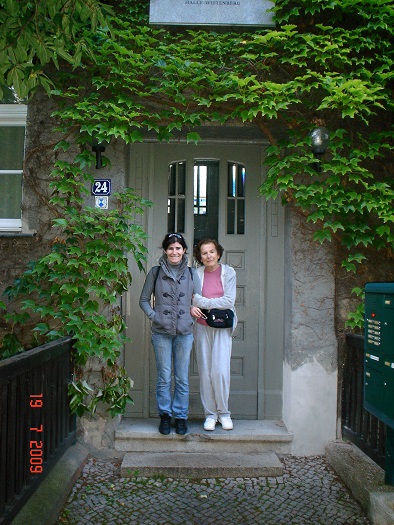
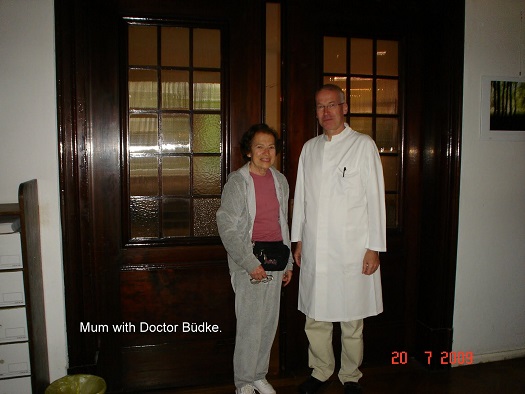
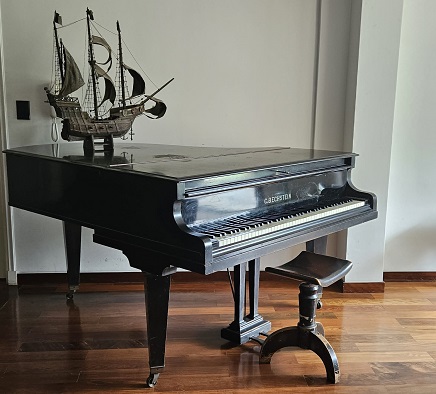
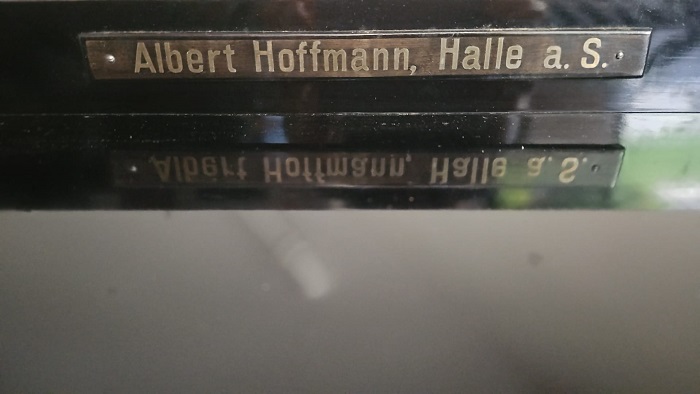
- Sources and further information:
- Descendants of Paul Marcus and Siegfried Marcus in Uruguay and the USA, in particular Ana Caviglia
- Stadtarchiv Halle, in particular the Gudrun Goeseke estate
- For more information on the history of the Gassenheimer family, see www.judeninthemar.org, a project by Canadian researcher Dr. Sharon Meen
- Halle University Library: Dissertation by Dr Paul Marcus: Über Anämia pseudoleucämica infantum. Halle 1922 and Collection of Historical Newspapers
- Journal “Der Jüdische Student, Heft 8 Jg. 1912, Heft 10 Jg. 1913. Retrieved from the Judaica Collection of the Goethe University Frankfurt a. Main
- Arolsen Archives, Ancestry Database, Centrum Judaicum Berlin
- Jüdische Auswanderung nach Südamerika, ed. v. Hilfsverein der Juden in Deutschland, Berlin, new edition 1939, p. 86ff. From the collection of the Leo Baeck Institute – New York | Berlin, digitised by the University Library JCS Frankfurt am Main in cooperation with the Center for Jewish History, NY: https://sammlungen.ub.uni-frankfurt.de/cm/periodical/rpage/4921038
- Zu Max und Lilly Loeb: Stolpersteine in Neuwied